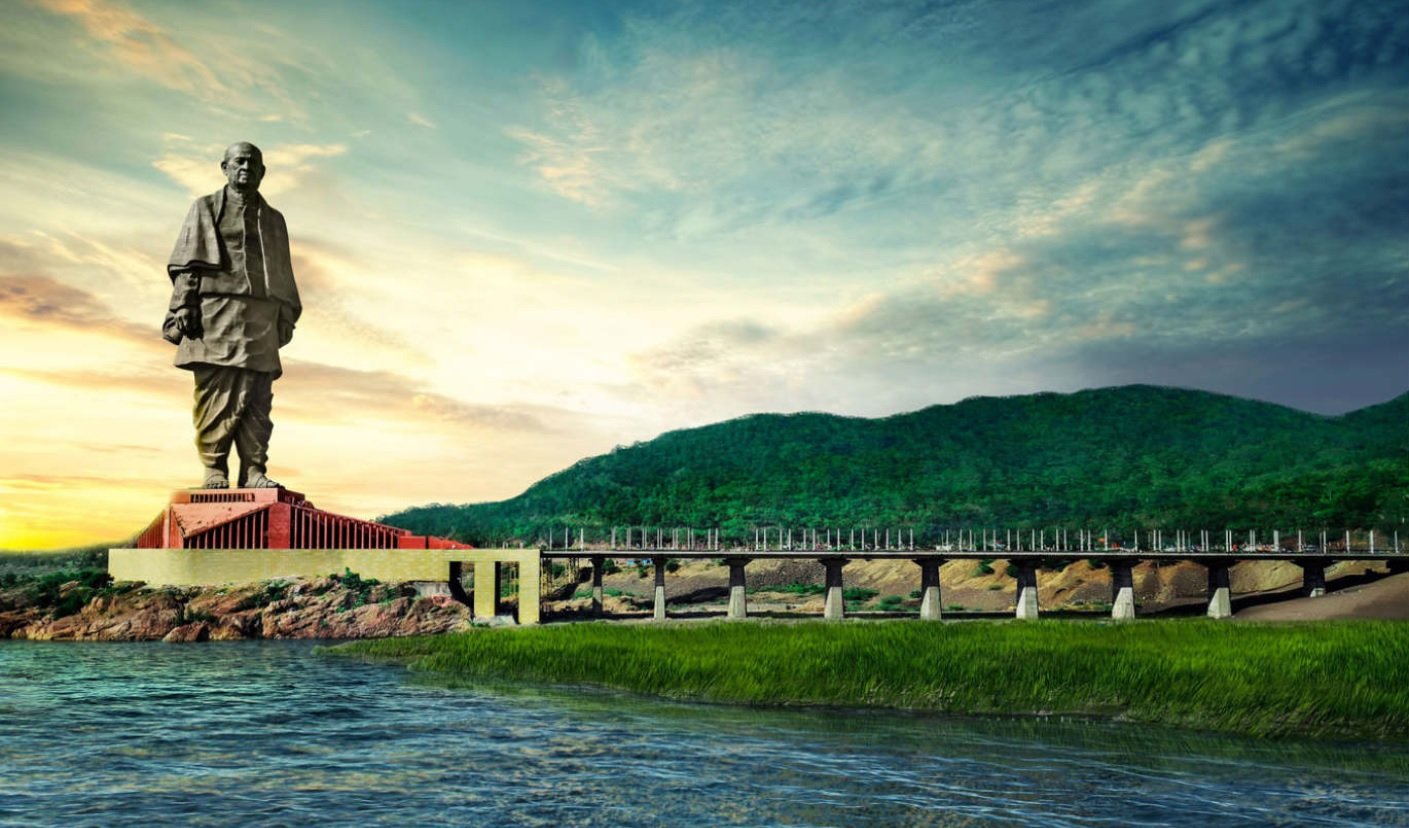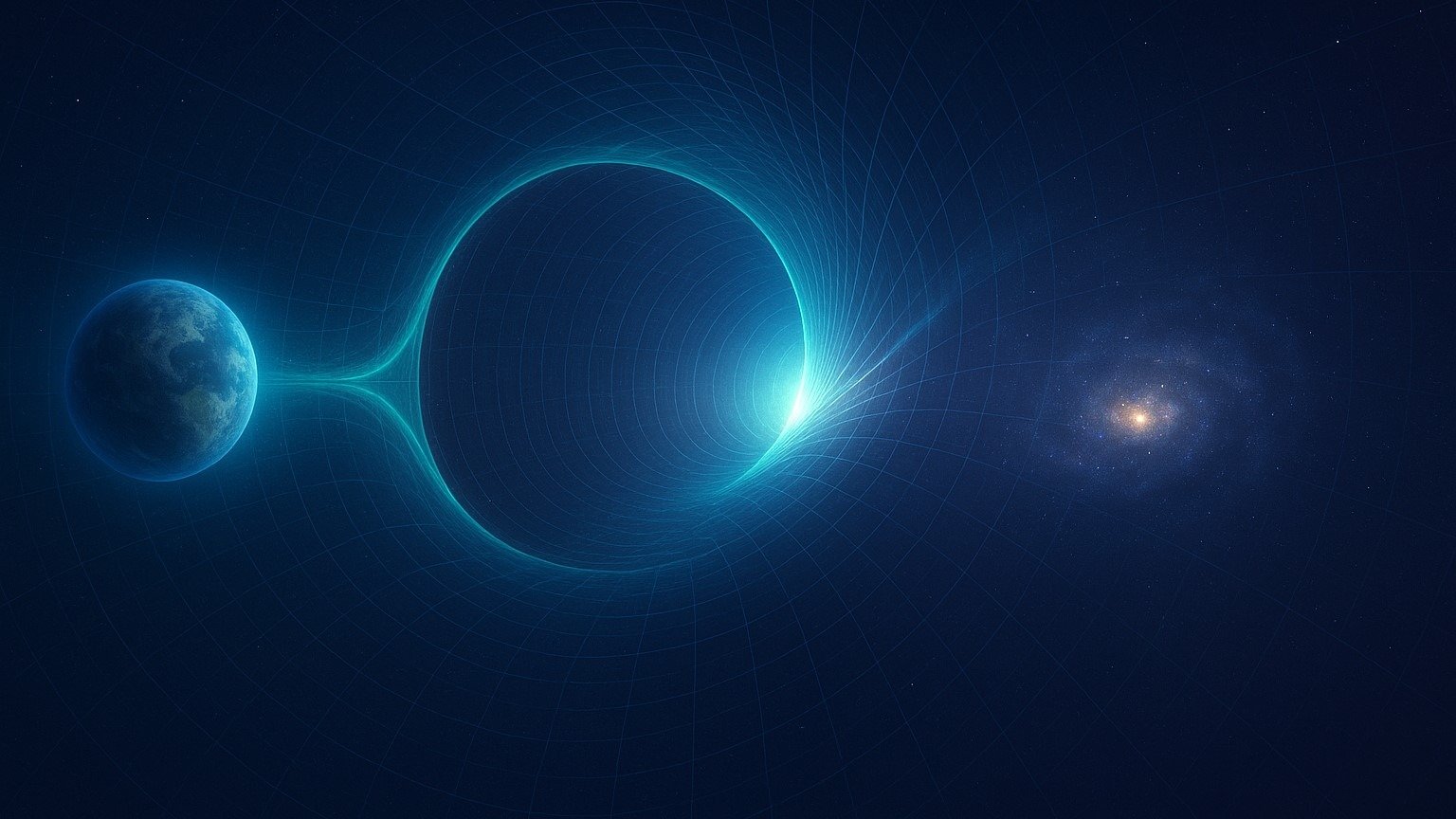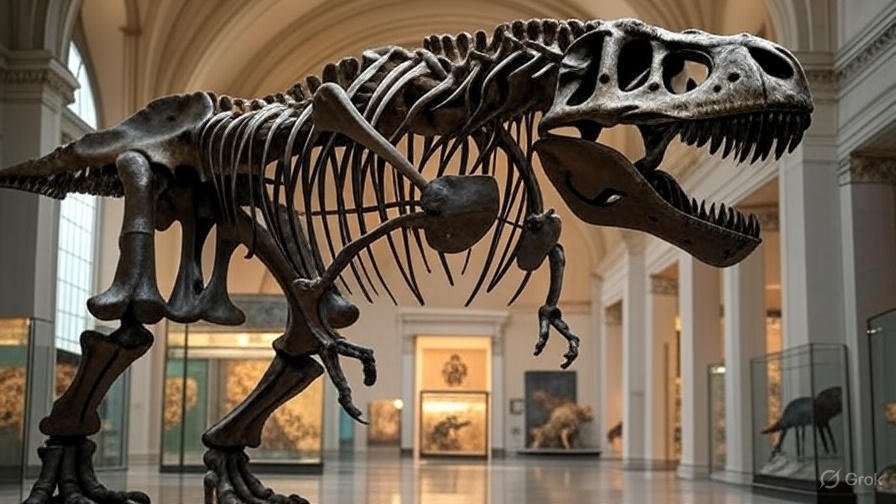The Statue of Unity: A Modern Marvel Reflecting India’s Spirit of Unity
The Statue of Unity, standing tall and majestic at a height of 182 meters (597 feet), is the world’s tallest statue, a symbol of strength, unity, and national pride for India. Located near the Sardar Sarovar Dam in the town of Kevadiya in Gujarat, this statue commemorates the life and legacy of Sardar Vallabhbhai Patel, the “Iron Man of India.” His contribution to India’s unity and nation-building after independence from British rule in 1947 is remembered with immense respect, and this statue is a towering tribute to that legacy.
Sardar Vallabhbhai Patel: The Iron Man of India
In the annals of Indian history, few names evoke as much respect and reverence as that of Sardar Vallabhbhai Patel, fondly known as the “Iron Man of India.” Known for his unyielding determination, steadfast vision, and unwavering commitment to national unity, Patel played a pivotal role in shaping modern India. His legacy as a freedom fighter, politician, and statesman is one of courage, resilience, and integrity.

Early Life and Background
Vallabhbhai Patel was born on October 31, 1875, in Nadiad, a small town in Gujarat, into a humble farming family. Growing up, Patel displayed an innate sense of leadership and resilience. Though his family was not affluent, his determination led him to pursue education while balancing his familial responsibilities. His early exposure to the difficulties faced by the rural communities of India shaped his understanding of social justice and ignited his lifelong dedication to empowering the masses.
After completing his primary education in Gujarat, Patel sought higher education and eventually went to England to study law. Upon returning to India, he became a successful barrister in Ahmedabad, respected by peers and clients alike for his dedication to justice and fair play. However, he was soon drawn away from his legal career by a much larger cause — India’s struggle for freedom.
Joining the Freedom Movement
It was Mahatma Gandhi who first drew Patel into the nationalist movement. Inspired by Gandhi’s philosophy of nonviolence and truth, Patel left his lucrative legal practice to join India’s fight for independence. He quickly rose through the ranks due to his remarkable organizational skills and his ability to connect with people from all walks of life.
Patel’s first significant contribution came during the Bardoli Satyagraha of 1928, an anti-tax revolt against the British-imposed increase in land revenue. Bardoli, a small town in Gujarat, was suffering from severe drought and economic hardship, yet the colonial government raised taxes, adding to the farmers’ misery. Patel led the peasants in a nonviolent protest, mobilizing them to resist paying the inflated taxes. Despite severe repression from the British, he remained undeterred, using peaceful methods of protest and negotiation to defend the farmers’ rights. His successful leadership in Bardoli earned him the title “Sardar,” meaning leader, and he became widely known as Sardar Patel.
Role in the Quit India Movement
As the independence movement gained momentum, Patel emerged as a key leader within the Indian National Congress. He was a crucial player in the Quit India Movement launched by Mahatma Gandhi in 1942, which called for an end to British rule. Patel’s steadfast resolve and tactical brilliance made him one of the movement’s most effective leaders. He was arrested multiple times by the British for his involvement in nationalist activities, but each imprisonment only strengthened his commitment to India’s independence.
Patel’s strength and pragmatism made him one of the most respected leaders within the Congress party. While he shared Gandhi’s vision for an independent India, he was known for his more pragmatic approach, often acting as a balancing force between leaders with differing ideologies. Patel’s influence extended beyond party lines, with leaders across India respecting him for his integrity and dedication to national unity.
The Unifier of India
Patel’s most monumental contribution to India came after independence. Following the partition of India and Pakistan in 1947, the newly independent nation faced the daunting task of integrating over 560 princely states that had been left to choose whether to join India, Pakistan, or remain independent. The fragmentation posed a serious threat to India’s territorial integrity and stability, and the task of unifying these states fell upon Patel’s shoulders.
Through a mix of diplomacy, negotiation, and the occasional use of force, Patel managed to persuade almost all the princely states to join the Indian Union. He personally met with the rulers, appealing to their sense of patriotism while emphasizing the importance of a unified India. His efforts prevented a Balkanization of India, and his skillful negotiations laid the groundwork for a united nation. This achievement is often cited as one of Patel’s greatest contributions to India, earning him the title “Iron Man of India.” His vision and determination ensured that India would emerge as a single, unified entity at a time when internal divisions could have easily torn it apart.
Architect of Indian Administration
After achieving political unification, Patel turned his attention to the administrative structure of India. He played a crucial role in establishing the Indian Administrative Service (IAS), the Indian Police Service (IPS), and other all-India services that serve as the backbone of the nation’s governance. Recognizing the need for a robust and efficient administrative system to govern a diverse country like India, Patel ensured that the bureaucracy was built on a foundation of merit, impartiality, and professionalism.
The civil services, which Patel considered the “steel frame” of India, continue to play an essential role in the functioning of the government. His contributions to shaping the administrative framework have had a lasting impact on India, and he is still remembered as the architect of India’s civil services.
Legacy and the Statue of Unity
Sardar Patel passed away on December 15, 1950, but his legacy endures. In recognition of his contributions, the government of India built the “Statue of Unity” in Gujarat, which stands as the tallest statue in the world at 182 meters. Unveiled in 2018, the statue is a testament to Patel’s unparalleled role in India’s history and serves as an inspiration for unity and strength.
The Statue of Unity represents more than just a monument; it is a symbol of India’s unity and resilience. Millions of visitors from around the world come to see the statue, reminding them of Patel’s sacrifices and his undying commitment to India’s unity. His efforts in building the foundation of India’s unity and administration have continued to inspire generations, serving as a guiding light for those who believe in the strength of a unified, diverse nation.
Table of Contents
The Vision Behind the Statue of Unity
Sardar Vallabhbhai Patel was one of India’s foremost leaders and played a pivotal role in uniting more than 560 princely states into a single, independent nation after the British left India. His vision of a united India, his fearless resolve, and his determination to bring the entire country together despite deep regional divides inspired the creation of the Statue of Unity. Indian Prime Minister Narendra Modi, while he was the Chief Minister of Gujarat, envisioned this statue as a tribute to Patel’s leadership, integrity, and the unyielding spirit he showed while shaping India’s destiny.

Inaugurated on October 31, 2018, on Patel’s 143rd birth anniversary, the statue was unveiled to the world as a marvel of engineering and a testament to the Indian spirit of resilience.
Engineering Marvel and Architectural Design
Designed by the Indian sculptor Ram V. Sutar, the Statue of Unity is an impressive example of modern engineering. The structure it self is twice the height of the Statue of Liberty in the United States. Built in just under four years, the statue stands on a base of 58 meters, making the entire structure over 240 meters tall. This colossal structure took nearly 210,000 cubic meters of cement, 25,000 metric tonnes of steel, and 1,700 tonnes of bronze cladding to complete.

The statue’s face was modeled after images and descriptions of Sardar Patel, capturing his aura and the power of his personality. Special attention was paid to Patel’s posture—standing upright with a sense of purpose, looking forward into the future—a true representation of his visionary leadership. The pose is symbolic of his mission to unite the nation and take it forward.
The Tourism Impact
The Statue of Unity has had a profound impact on tourism in Gujarat. In its first year alone, it attracted over 2.8 million visitors, a number that continues to grow as people from across the world come to marvel at its grandeur. The surrounding area has been developed into a tourist complex with a variety of attractions. The government has created numerous amenities and sites around the statue, such as:
- Viewing Gallery: Situated 153 meters above ground, the gallery offers stunning panoramic views of the Narmada River and the Sardar Sarovar Dam, drawing thousands of visitors who want to experience the view from the top of the world’s tallest statue.
- Valley of Flowers: A beautifully landscaped garden around the statue, with over 100 types of flowers, enhances the beauty of the complex and provides a serene experience for visitors.
- Sardar Patel Museum and Exhibition Hall: The museum showcases Patel’s life, his role in India’s independence, and the path he paved for a united India. It also features a 15-minute audio-visual presentation on Patel’s contributions and the making of the statue.
- The Light and Sound Show: Every evening, a light and sound show is held at the site, narrating the life of Sardar Patel and the creation of the Statue of Unity. The combination of lights, music, and storytelling has been a big draw for visitors.
Economic and Social Impact
The construction of the Statue of Unity has also had a ripple effect on the economy of the region. Employment opportunities have been created for local residents, boosting the income of nearby communities and bringing infrastructural development to the region. The development of hotels, restaurants, and transportation networks around the site has transformed this once quiet area into a bustling hub of activity.
Moreover, the statue and its associated tourist attractions contribute to promoting Indian culture, history, and values to a global audience. This site stands as a proud reminder of India’s progress and its capability to accomplish engineering marvels.
Environmental and Social Concerns
While the Statue of Unity is undoubtedly an impressive structure, its construction did spark some environmental and social debates. Some environmentalists expressed concerns about the ecological impact of the construction, especially considering the statue’s proximity to the ecologically sensitive Narmada river ecosystem. Locals in the area were also concerned about displacement and the impact on their way of life. The government has taken steps to address these concerns, including resettlement plans and eco-friendly tourism initiatives, to create a balance between development and sustainability.
The Statue of Unity: A Complete Guide on Fees, Operating Hours, and the Best Time to Visit
The Statue of Unity, the world’s tallest statue, proudly stands at a towering height of 182 meters, representing the iconic Indian statesman Sardar Vallabhbhai Patel. This engineering marvel is located on the banks of the Narmada River in Kevadia, Gujarat. Besides being a tribute to Patel, it has become one of India’s top tourist destinations, offering a mix of natural beauty, architectural wonder, and cultural richness. Here’s everything you need to know about the fees, operating hours, and the best time to visit.
1. Entry Fees
The ticket prices for the Statue of Unity vary depending on the type of experience you’re looking for and the age of the visitor. Here is a breakdown of the fees:
Basic Entry Ticket
- Adults (Ages 15+): Rs.150
- Children (Ages 3-15): Rs.90
- Children (Under 3): Free
This basic ticket allows you access to the Valley of Flowers, Sardar Patel Memorial, Museum, and Audio-Visual Gallery, along with the Statue of Unity viewing gallery located at a height of 153 meters.
Observation Deck Ticket
- Adults (Ages 15+): Rs.380
- Children (Ages 3-15): Rs.230
The Observation Deck ticket gives you access to all the features included in the Basic Entry Ticket plus access to the Observation Deck at a height of 135 meters, offering panoramic views of the beautiful surroundings.
Express Entry Ticket
- For all ages: Rs.1,030
The Express Entry ticket includes all the benefits of the Observation Deck Ticket, along with priority entry, allowing you to skip the queue, which can be quite useful during peak tourist seasons.
2. Operating Hours
The Statue of Unity is open throughout the year with a consistent schedule, allowing visitors to enjoy the site on both weekdays and weekends. Here’s a breakdown of the operating hours:
- Visiting Hours: 9:00 AM to 6:00 PM (daily)
- Closed: Mondays (for maintenance)
Within these hours, visitors can explore various attractions, including the statue itself, the museum, and the surrounding park areas. If you’re interested in additional attractions like the laser show, check specific timings and availability as they may vary seasonally.
Laser Light and Sound Show Timings
- Timing: 7:30 PM (runs every day except Monday)
This spectacular show highlights the story of Sardar Patel and the making of modern India. It’s an immersive experience that uses lights, visuals, and sound projected on the statue, creating a mesmerizing sight.
3. Best Time to Visit
The Statue of Unity offers a unique experience every season, but certain times of the year can enhance your visit.
Ideal Season to Visit
- October to March: The winter months in Gujarat are relatively pleasant, with temperatures ranging from 12°C to 30°C (54°F to 86°F). These months are ideal as the weather remains cool, making it comfortable to explore both the statue and the surrounding areas.
Avoid Peak Summer
- April to June: Summers in Gujarat can be extremely hot, with temperatures soaring up to 45°C (113°F). While the statue and the museum are climate-controlled, moving around in the open can be uncomfortable.
Monsoon Visits
- July to September: The monsoon season brings lush greenery to the surroundings, and the nearby Narmada Dam is usually full, making the views more scenic. However, you may need to be prepared for some rainfall, which could affect the accessibility of outdoor attractions.
Weekday vs. Weekend Visits
Weekdays are generally less crowded than weekends, so if you’re looking for a quieter experience, plan your visit from Tuesday to Thursday. Holidays and weekends tend to draw larger crowds, especially during peak tourist seasons.
Attractions Around the Statue of Unity
While the Statue of Unity itself is the main attraction, the surrounding area offers a host of other sights to explore:
- Valley of Flowers: A beautifully landscaped garden with a variety of colorful flowers and plants, adding to the visual experience of your visit.
- Sardar Sarovar Dam: An impressive dam with viewing points, showcasing the immense engineering effort to harness the river’s power.
- Jungle Safari: Located nearby, this safari offers a glimpse into the region’s wildlife, featuring various animals including lions, tigers, and antelopes.
- Zarvani Eco-Tourism Site: A bit further away, this natural spot is perfect for adventure enthusiasts, with waterfalls, treks, and bird-watching opportunities.
Tips for Your Visit
- Book Tickets Online: To avoid long queues, consider booking your tickets in advance through the official Statue of Unity website.
- Arrive Early: Arriving around opening time allows you to explore the statue and its surroundings without large crowds.
- Carry Essentials: Given the sunny climate, don’t forget essentials like sunscreen, hats, and water.
- Plan for the Laser Show: The light and sound show at dusk is a memorable part of the visit, so plan accordingly if you’d like to see it.
- Consider the Express Entry: For those visiting during peak times or with limited time, the Express Entry ticket is a convenient option.
Conclusion: A Monument of Unity and Strength
The Statue of Unity isn’t just a monument; it’s a symbol of India’s unity, resilience, and ambition. It celebrates Sardar Patel’s life and his unmatched role in uniting a nation. At the same time, it represents the progress of India in engineering, tourism, and global recognition. For Indians, the statue is a powerful reminder of the country’s heritage and a source of pride. For international visitors, it offers a glimpse into India’s rich history and its respect for its leaders.
In many ways, the Statue of Unity is more than a tribute to Sardar Patel. It’s a statement about India’s place in the world, an emblem of strength, and a destination that has put India on the global map for architectural and cultural wonders.
Unlock the Beauty of China: 05 Breathtaking Destinations for Every Traveler
The Statue of Liberty: A Historic Icon of Freedom, Hope, and Friendship since 1886
Giza Necropolis: The Timeless Wonders of the Ancient World and Guide to Touring and Tickets














4 comments